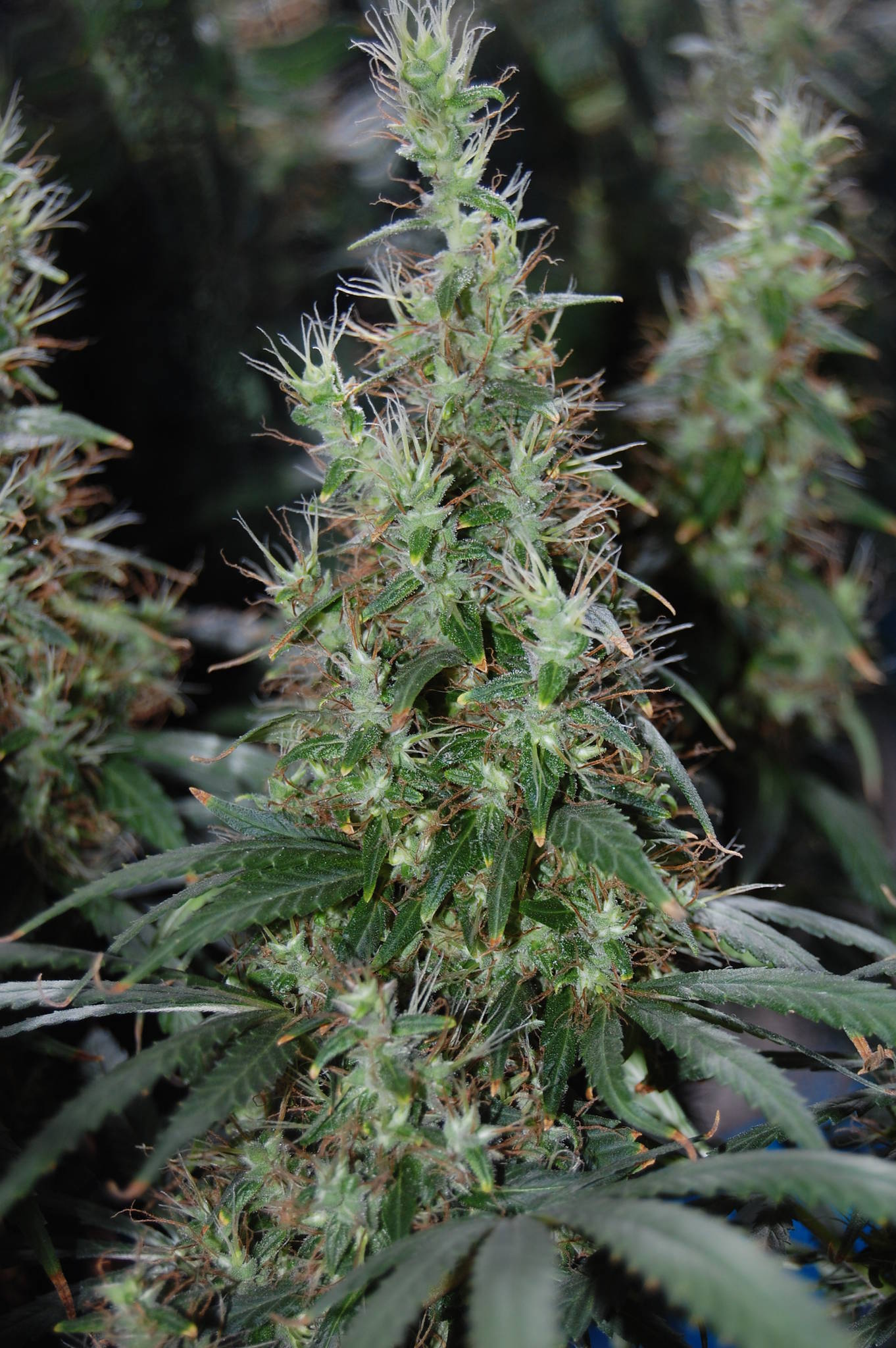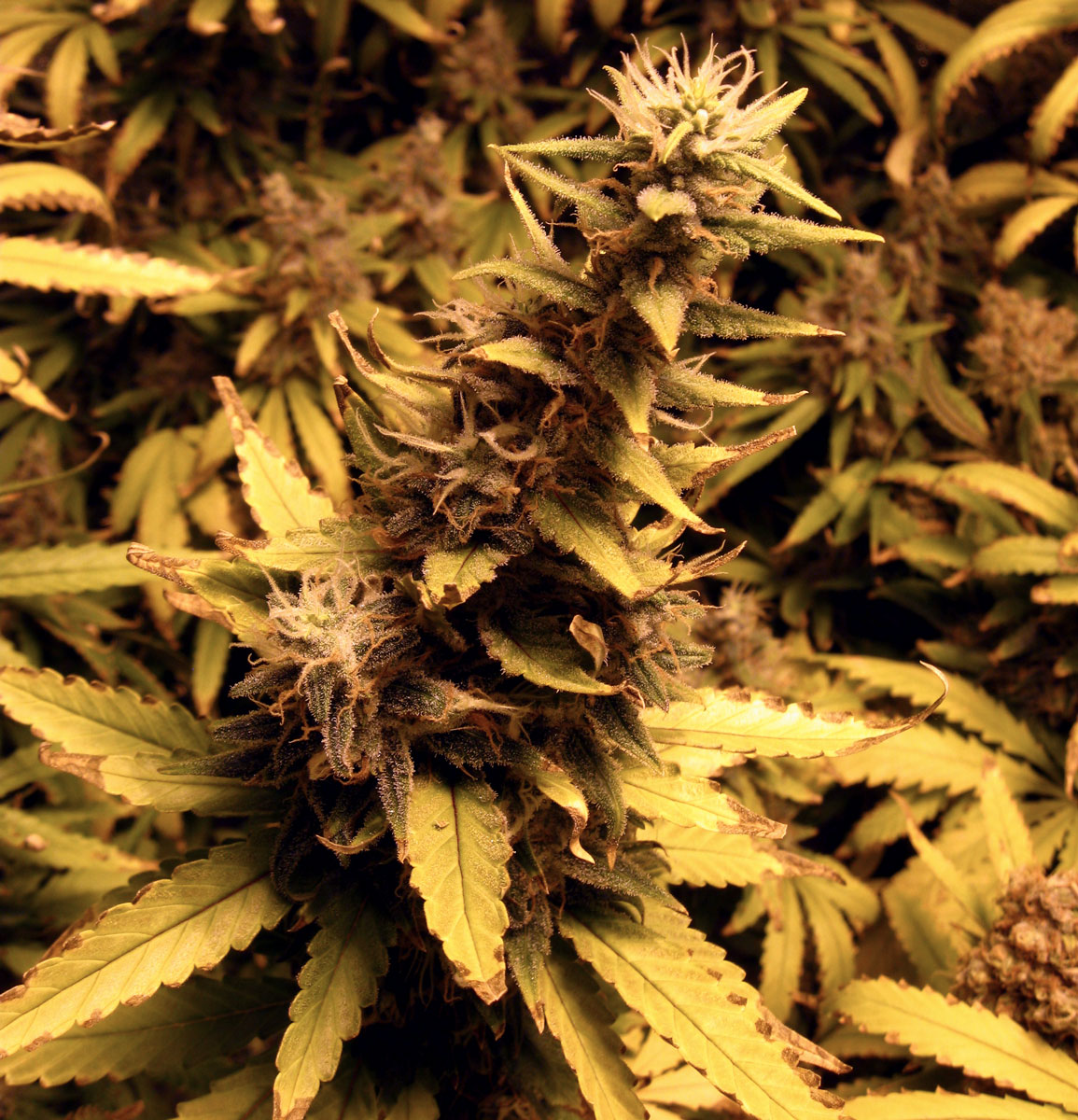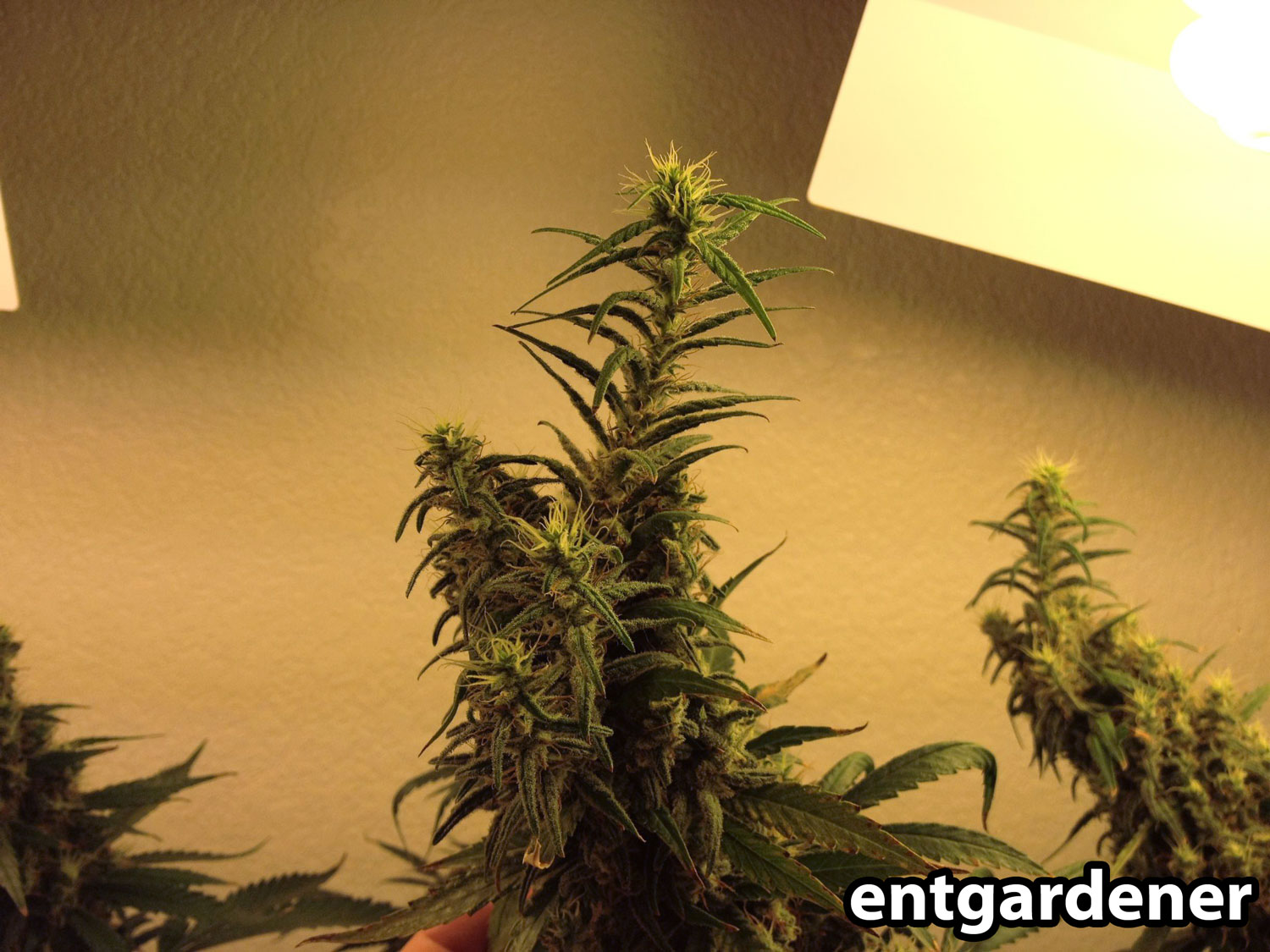ZanzibarDawa
Member
As the title suggests this is about extreme foxtailing often seen on tropical sativas grown indoors.
I am not talking about some foxtailing here and there, what I mean is foxtails all over the place often in conjunction with other problems like never finishing, lower buds in the foxtails bleaching/wilting.
I hope it is OK to borrow a pic from ThaiBliss he posted in his great thread The Search For Trip Weed
View Image
I really wonder what the main causes are.
Some suspect too much (far) infra red light. But then LED lighting should theoretically help, as far as I am aware of, it doesn't.
High N levels can clearly increase this problem, but even with very low levels this can occure (as ThaiBliss proved in his thread).
Light intensity is mentiones too sometimes, although it seems that even with (too) high intensity this problem occures.
Temperatures seem to play a role too, not sure which though as even with perfect temps this seems to occure.
So the question pretty much remains unanswered, at least by me
Further factors I could imagine playing a role are:
Temperature fluctuations
Humidity levels
Light Spectrum
Lighting schedule
Watering schedule
Has anyone ever experimented with ethylene to assist ripening? Or maybe with other hormones? This might give a clue to the causes.
It could well be that the indoor plants produce more gibberellic acid during fower than the outdoor equivalents.
This would make sense as it is responsible for elongation as well as for the formation of male flowers. Male flowers often occure at similar times in flower (hermies) so this might be a clue yet the cause of elevated gibberellic acid levels remain unclear. THIS IS ALL JUST A HYPOTHESIS!
Looking forward to hearing your oppinions and experiences!
ZD
I am not talking about some foxtailing here and there, what I mean is foxtails all over the place often in conjunction with other problems like never finishing, lower buds in the foxtails bleaching/wilting.
I hope it is OK to borrow a pic from ThaiBliss he posted in his great thread The Search For Trip Weed
View Image
I really wonder what the main causes are.
Some suspect too much (far) infra red light. But then LED lighting should theoretically help, as far as I am aware of, it doesn't.
High N levels can clearly increase this problem, but even with very low levels this can occure (as ThaiBliss proved in his thread).
Light intensity is mentiones too sometimes, although it seems that even with (too) high intensity this problem occures.
Temperatures seem to play a role too, not sure which though as even with perfect temps this seems to occure.
So the question pretty much remains unanswered, at least by me
Further factors I could imagine playing a role are:
Temperature fluctuations
Humidity levels
Light Spectrum
Lighting schedule
Watering schedule
Has anyone ever experimented with ethylene to assist ripening? Or maybe with other hormones? This might give a clue to the causes.
It could well be that the indoor plants produce more gibberellic acid during fower than the outdoor equivalents.
This would make sense as it is responsible for elongation as well as for the formation of male flowers. Male flowers often occure at similar times in flower (hermies) so this might be a clue yet the cause of elevated gibberellic acid levels remain unclear. THIS IS ALL JUST A HYPOTHESIS!
Looking forward to hearing your oppinions and experiences!
ZD





 Well, i'm not too worried about bag appeal, seem to be pretty much like your bird in that respect
Well, i'm not too worried about bag appeal, seem to be pretty much like your bird in that respect .
.



